
Augustin Pyramusde Candolle was a Swiss botanist. René Louiche Desfontaines launched de Candolle's botanical career by recommending him at a herbarium. Within a couple of years de Candolle had established a new genus, and he went on to document hundreds of plant families and create a new natural plant classification system. Although de Candolle's main focus was botany, he also contributed to related fields such as phytogeography, agronomy, paleontology, medical botany, and economic botany.

A tepal is one of the outer parts of a flower. The term is used when these parts cannot easily be classified as either sepals or petals. This may be because the parts of the perianth are undifferentiated, as in Magnolia, or because, although it is possible to distinguish an outer whorl of sepals from an inner whorl of petals, the sepals and petals have similar appearance to one another. The term was first proposed by Augustin Pyramus de Candolle in 1827 and was constructed by analogy with the terms "petal" and "sepal".

Quercus wislizeni, known by the common name interior live oak, is an evergreen oak, highly variable and often shrubby, found in many areas of California in the United States continuing south into northern Baja California in Mexico. It generally occurs in foothills, being most abundant in the lower elevations of the Sierra Nevada, but also widespread in the Pacific Coast Ranges—where since 1980 it has been known as a separate species Quercus parvula—and the San Gabriel Mountains. It was named for its collector, Friedrich Adolph Wislizenus (1810–1889).
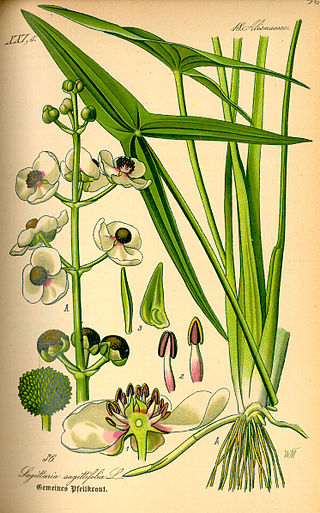
Sagittaria is a genus of about 30 species of aquatic plants whose members go by a variety of common names, including arrowhead, Katniss, duck potato, swamp potato, tule potato, and wapato. Most are native to South, Central, and North America, but there are also some from Europe, Africa, and Asia.
The International Code of Nomenclature for Cultivated Plants (ICNCP) is a guide to the rules and regulations for naming cultigens, plants whose origin or selection is primarily due to intentional human activity. It is also known as Cultivated Plant Code. Cultigens under the purview of the ICNCP include cultivars, Groups, and grexes. All organisms traditionally considered to be plants are included. Taxa that receive a name under the ICNCP will also be included within taxa named under the International Code of Nomenclature for algae, fungi, and plants, for example, a cultivar is a member of a species.

Johann Müller was a Swiss botanist who was a specialist in lichens. He published under the name Johannes Müller Argoviensis to distinguish himself from other naturalists with similar names.
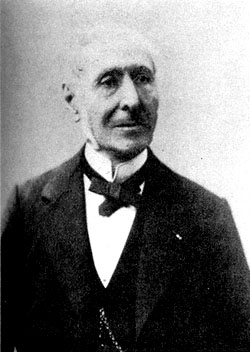
Alphonse Louis Pierre Pyramusde Candolle was a French-Swiss botanist, the son of the Swiss botanist Augustin Pyramus de Candolle.
The De Candolle system is a system of plant taxonomy by French (Swiss) botanist Augustin Pyramus de Candolle (1778−1841).

Anne Casimir Pyramusde Candolle was a Swiss botanist, the son of Alphonse Pyramus de Candolle.
The elm cultivar Ulmus 'Rubra' was reputedly cloned from a tree found by Vilmorin in a wood near Verrières-le-Buisson in the 1830s. It was listed in the 1869 Catalogue of Simon-Louis, Metz, France, as Ulmus campestris rubra, and by Planchon in de Candolle's Prodromus Systematis Naturalis Regni Vegetabilis (1873) as Ulmus libero-rubra: 'Orme à liber rouge' [:elm with red inner bark]. Elwes and Henry (1913) and Bean (1936) listed it as Ulmus montana [:U. glabraHuds.] var. libro-rubro, the former stating that the tree appeared "identical" to Simon-Louis's Ulmus campestris rubra. A specimen in the Zuiderpark, The Hague, was identified in 1940 as a wych elm cultivar, U. glabraHuds.libero rubro.
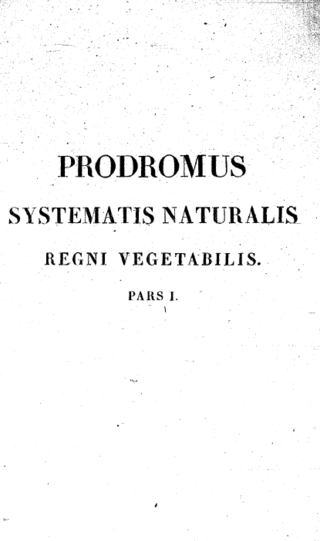
Prodromus Systematis Naturalis Regni Vegetabilis (1824–1873), also known by its standard botanical abbreviation Prodr. (DC.), is a 17-volume treatise on botany initiated by Augustin Pyramus de Candolle. De Candolle intended it as a summary of all known seed plants, encompassing taxonomy, ecology, evolution and biogeography. He authored seven volumes between 1824 and 1839, but died in 1841. His son, Alphonse de Candolle, then took up the work, editing a further ten volumes, with contributions from a range of authors. Volume 17 was published in October 1873. The fourth and final part of the index came out in 1874. The Prodromus remained incomplete, dealing only with dicotyledons.
José Mariano Mociño Suárez Lozano, or simply José Mariano Mociño, was a naturalist from New Spain.

Chaenactis is a genus of plants in the family Asteraceae which are known generally as pincushions and dustymaidens.
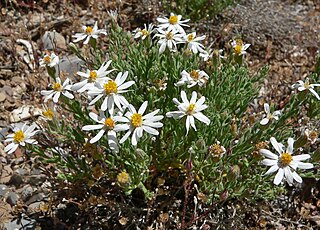
Chaetopappa is a genus of plants in the family Asteraceae which are known generally as leastdaisies.
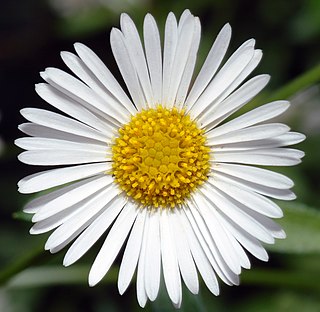
Erigeron karvinskianus, the Mexican fleabane, is a species of daisy-like flowering plant in the family Asteraceae, native to Mexico and parts of Central America.

Layia is a genus of flowering plants in the family Asteraceae known generally as tidy tips, native to western North America. Several are California endemics.

Xanthisma, common name sleepy-daisy, is a genus of flowering plants in the family Asteraceae.

Richard Émile Augustin de Candolle was a Swiss botanist and was British consul to the Canton of Geneva between 1912 and 1918.













